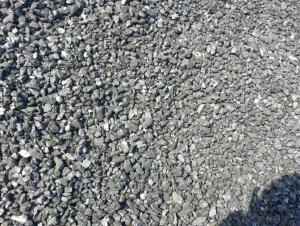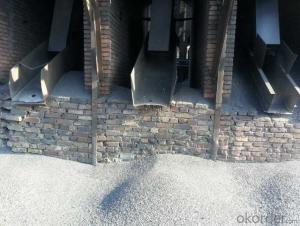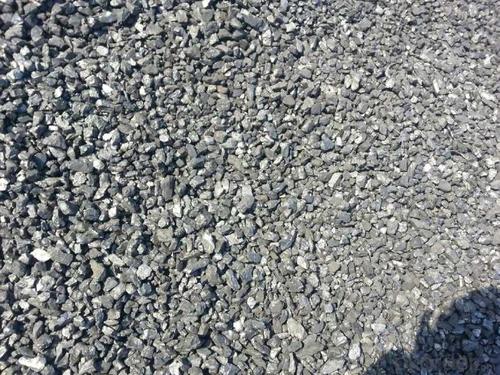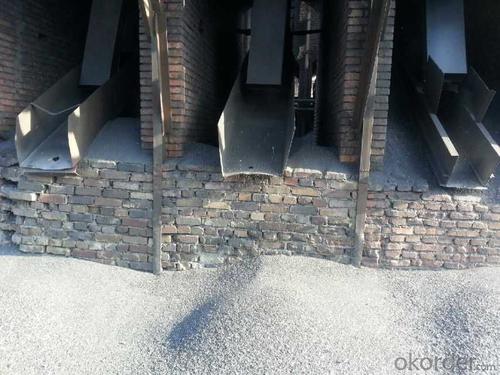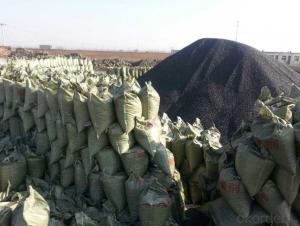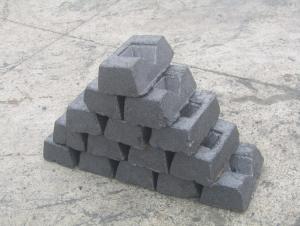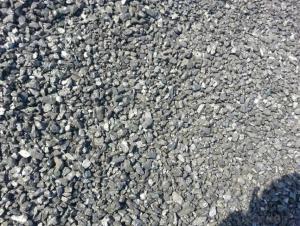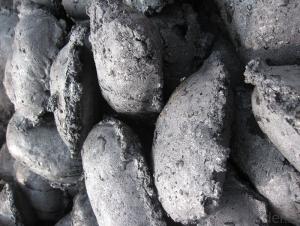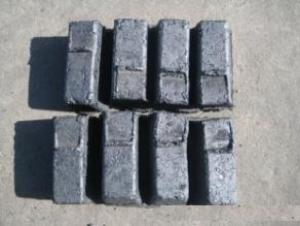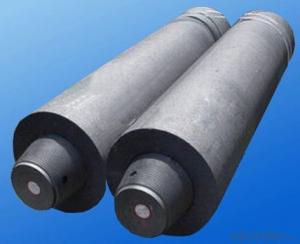Injection Carbon With Low Sulphur And Good Quality
- Loading Port:
- Tianjin
- Payment Terms:
- TT or LC
- Min Order Qty:
- 20 m.t.
- Supply Capability:
- 3000 m.t./month
OKorder Service Pledge
OKorder Financial Service
You Might Also Like
Product Introduction:
It is Calcined anthracite, in steelmaking, some small size are called Injection Carbon.
Calcined Anthracite is produced using the best Anthracite-Taixi Anthracite with low S and P, It is widely used in steel making and casting.
Specification
PARAMETER UNIT GUARANTEE VALUE | |||||
F.C.% | 95MIN | 94MIN | 93MIN | 92MIN | 90MIN |
ASH % | 4MAX | 5MAX | 6 MAX | 6.5MAX | 8.5MAX |
V.M.% | 1 MAX | 1MAX | 1.0MAX | 1.5MAX | 1.5MAX |
SULFUR % | 0.3MAX | 0.3MAX | 0.3MAX | 0.35MAX | 0.35MAX |
MOISTURE % | 0.5MAX | 0.5MAX | 0.5MAX | 0.5MAX | 0.5MAX |
The products can be provided according to the customer's special demands.
Packing
1.Big bag: 500kg/600kg PP Bag.(activated carbon)
2.Small bag: 25kg kraft bag or PP Bag.
3.According to customer's requirements
Advantage of Our Injection Carbon:
--Low ash and sulfur contain
--Reduce needs for expensive melt additives.
--Increased dissolution rate over anthracite blends
--Reduces slagging time, labor and disposal cost
--Extends the life of the furnace lining, reduce maintenance cost and increase production yield.
Pictures of Injection carbon:
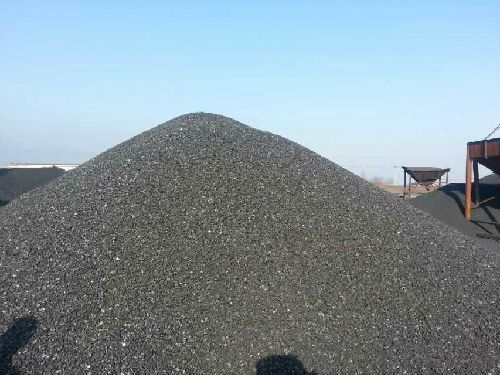
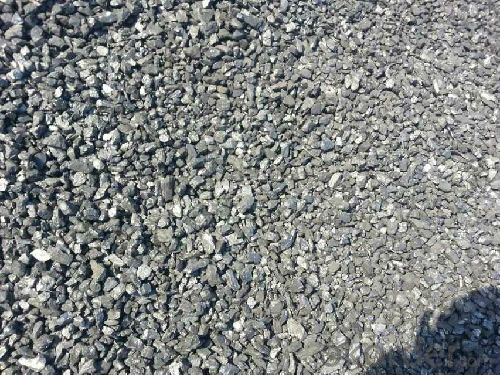
- Q: Is carbon a conductor?
- Graphite is a conductor, diamond is notGraphite is a layer, C structure can guide electrons, but diamond is stable, C structure can not guide electronsTo see whether a substance is a conductor, the key is to see if it can lead to electrons - - this is an explanation in a middle school book
- Q: How does carbon impact the availability of clean water resources?
- Carbon can have a significant impact on the availability of clean water resources. One of the main ways carbon affects water resources is through its contribution to climate change. Increased carbon emissions, mainly from the burning of fossil fuels, lead to higher global temperatures and disrupt the water cycle. As a result, some regions may experience more frequent and severe droughts, while others face increased rainfall and flooding events. Climate change also affects the melting of glaciers and snowpacks, which are crucial sources of freshwater for many communities. As carbon emissions warm the planet, glaciers and snowpacks melt at an accelerated rate, leading to reduced water supply in rivers and streams that rely on this natural storage. This can ultimately result in water scarcity and affect not only drinking water availability but also agricultural irrigation and industrial water usage. Furthermore, carbon pollution can also impact the quality of water resources. Carbon dioxide dissolves in water and reacts with it, leading to a decrease in pH levels and increased acidity. This phenomenon, known as ocean acidification, is particularly harmful to marine ecosystems and organisms that rely on carbonate ions to build their shells or skeletons. As these organisms struggle to survive, it can disrupt the balance of entire aquatic ecosystems, which in turn affects the availability of clean water resources. Moreover, carbon-based pollutants from human activities, such as industrial processes or agricultural runoff, can contaminate water sources. For example, carbon-based chemicals like pesticides, fertilizers, and hydrocarbons can infiltrate groundwater or get washed into rivers and lakes, compromising their quality and making them unsuitable for drinking or other uses. Overall, the impact of carbon on the availability of clean water resources is multifaceted. It affects the quantity of water through changes in the water cycle, reduces the quality of water through acidification and pollution, and disrupts ecosystems that rely on water resources. Addressing carbon emissions and mitigating climate change is crucial to protect and ensure the availability of clean water for present and future generations.
- Q: What are the advantages of carbon-based fertilizers?
- Farmers and gardeners favor carbon-based fertilizers for several reasons. Firstly, these fertilizers, such as compost and manure, are organic and derived from natural sources, devoid of synthetic chemicals. This eco-friendly quality reduces the risk of water pollution and soil degradation. Secondly, carbon-based fertilizers contain ample organic matter, enhancing soil structure and water retention. This proves especially helpful in areas with infertile soil or frequent droughts, as it conserves moisture and prevents nutrient loss. Furthermore, these fertilizers foster the growth of beneficial microorganisms in the soil. These microorganisms gradually break down organic matter, releasing essential nutrients and ensuring a steady supply to plants. The result is improved plant health and a decreased likelihood of nutrient imbalances or deficiencies. Additionally, carbon-based fertilizers prove cost-effective in the long run. Though they may require more effort and time initially, they can be produced on-site through composting or sourced locally from farms or livestock operations. This reduces the need for expensive chemical fertilizers and minimizes transportation costs. Lastly, carbon-based fertilizers aid in carbon sequestration and contribute to combating climate change. By utilizing organic waste materials as fertilizers, they divert them from landfills, where they would emit greenhouse gases. Instead, they are recycled into the soil, increasing its carbon content and promoting soil health. In summary, carbon-based fertilizers offer numerous advantages in terms of sustainability, soil fertility, cost-effectiveness, and environmental impact. Their usage can yield healthier plants, improved soil quality, and a more sustainable and resilient agricultural system.
- Q: What are the different types of carbon-based polymers?
- Carbon-based polymers come in various types, each possessing unique properties and applications. Some commonly encountered variants include: 1. Polyethylene (PE): Esteemed for its exceptional strength and chemical resistance, PE is extensively utilized in packaging materials, plastic bottles, and pipes. 2. Polypropylene (PP): PP is akin to PE, but it boasts a higher melting point and superior heat resistance. This makes it a popular choice for automotive parts, textiles, and food packaging. 3. Polystyrene (PS): PS is a lightweight and rigid polymer frequently employed in packaging materials, disposable utensils, and insulation. 4. Polyvinyl chloride (PVC): PVC is a versatile polymer that can be either rigid or flexible based on the additives employed. It finds common application in pipes, electrical insulation, and flooring. 5. Polyethylene terephthalate (PET): PET is a robust and lightweight polymer commonly found in beverage bottles, food containers, and synthetic fibers. 6. Polyurethane (PU): PU is a flexible and durable polymer utilized in foams, coatings, adhesives, and textiles. 7. Polycarbonate (PC): PC is a robust and transparent polymer regularly utilized in eyeglass lenses, safety goggles, and electronic components. 8. Phenolic resins: Renowned for their exceptional heat resistance, these polymers are commonly employed in coatings, adhesives, and electrical components. These examples represent only a fraction of the diverse range of carbon-based polymers available. Each type possesses specific properties and applications, rendering them suitable for a wide array of industries and products.
- Q: What are the consequences of increased carbon emissions on human health?
- Increased carbon emissions have numerous consequences on human health. Firstly, carbon emissions contribute to the formation of air pollution, specifically fine particulate matter (PM2.5) and ground-level ozone, which can lead to respiratory issues such as asthma, bronchitis, and other respiratory diseases. Additionally, exposure to air pollution from carbon emissions has been linked to an increased risk of cardiovascular diseases, including heart attacks and strokes. Moreover, carbon emissions contribute to climate change, resulting in more frequent and intense heatwaves, extreme weather events, and the spread of infectious diseases. These phenomena can have direct and indirect impacts on human health, leading to heat-related illnesses, injuries, mental health issues, and the displacement of communities. Overall, the consequences of increased carbon emissions on human health are significant and require urgent action to mitigate their effects.
- Q: What are the effects of carbon emissions on the stability of mountains?
- Carbon emissions have a significant impact on the stability of mountains. One of the main effects is the accelerated melting of glaciers and ice caps due to global warming caused by carbon emissions. As temperatures rise, the ice and snow that hold mountains together begin to melt, leading to increased instability. This melting can lead to more frequent and larger avalanches, landslides, and rockfalls, posing a significant threat to human settlements and ecosystems in mountainous areas. Another effect of carbon emissions on mountain stability is the alteration of precipitation patterns. As the climate changes, rainfall becomes more unpredictable, resulting in a higher frequency of intense rainfall events. This increased rainfall can cause soil erosion and weaken the stability of mountain slopes. The combination of increased erosion and weakened slopes can lead to landslides and other mass movements, further destabilizing mountains. Furthermore, carbon emissions contribute to the acidification of rainwater, which can have detrimental effects on the stability of mountains. Acid rain can erode rocks and soil, making them more susceptible to weathering processes. This weakening of the geological structure can increase the likelihood of landslides and rockfalls. Lastly, the impact of carbon emissions on mountain stability extends beyond physical changes. Climate change resulting from carbon emissions can also lead to shifts in ecosystems and biodiversity in mountainous regions. These changes can affect the stability and resilience of mountain ecosystems, as well as alter the patterns of vegetation cover. The loss of vegetation cover, for example, can further increase the susceptibility of slopes to erosion and landslides. In summary, carbon emissions have numerous adverse effects on the stability of mountains. From accelerated melting of glaciers to altered precipitation patterns, acid rain, and shifts in ecosystems, these emissions pose a significant threat to the geological and ecological stability of mountains. It is crucial to reduce carbon emissions and address climate change to mitigate these effects and preserve the stability of mountain regions.
- Q: What are the consequences of increased carbon emissions on human migration patterns?
- Human migration patterns are significantly affected by the increase in carbon emissions. One of the most notable outcomes is the worsening of climate change, resulting in more frequent and severe natural disasters like hurricanes, floods, and droughts. These extreme weather events can cause immense damage to communities, infrastructure, and livelihoods, compelling people to move in search of safer and more stable environments. The rise in sea levels, which is another consequence of carbon emissions, poses a substantial threat to coastal regions and island nations. As sea levels continue to climb, low-lying areas become increasingly vulnerable to flooding and coastal erosion, rendering them uninhabitable. This displacement of populations, commonly known as climate refugees, can lead to large-scale migrations, placing additional strain on resources and infrastructure in the receiving areas. Furthermore, carbon emissions contribute to shifts in temperature and precipitation patterns, which can have a profound impact on agricultural activities. Changes in growing seasons, more frequent droughts or floods, and the proliferation of pests and diseases can all negatively affect crop yields and food security. This disruption in the availability of food and resources can compel vulnerable populations to migrate in search of better livelihoods and food sources. The consequences of increased carbon emissions on human migration patterns also extend to health issues. Climate change can facilitate the spread of diseases like malaria and dengue fever, as well as exacerbate air pollution, worsening respiratory problems. These health risks can necessitate the relocation of individuals and communities to areas with better healthcare infrastructure and conditions. To sum up, the increase in carbon emissions has far-reaching effects on human migration patterns. The exacerbation of climate change, rising sea levels, disruptions to agriculture, and health risks all contribute to the displacement of populations, creating a need for individuals and communities to seek safer and more stable environments. It is crucial to address carbon emissions and mitigate climate change in order to minimize the adverse impacts on human migration and ensure a sustainable future.
- Q: What are the consequences of increased carbon emissions on global food security?
- Increased carbon emissions have significant consequences on global food security. One of the most immediate impacts is the alteration of weather patterns and increased frequency of extreme weather events such as droughts, floods, and heatwaves. These events can lead to crop failures, reduced agricultural productivity, and loss of livestock, ultimately resulting in food shortages and price volatility. Carbon emissions also contribute to climate change, leading to long-term shifts in temperature and precipitation patterns. Higher temperatures can accelerate the growth and reproduction rates of pests and diseases, which can devastate crops and livestock. Additionally, changes in rainfall patterns can disrupt the timing and quantity of water available for irrigation, further reducing agricultural productivity. Furthermore, carbon emissions contribute to the acidification of oceans, which negatively affects marine ecosystems and the livelihoods of communities dependent on fishing and aquaculture. This can lead to a decline in fish stocks, threatening the availability of a vital source of protein and nutrition for millions of people. Another consequence of increased carbon emissions is the loss of biodiversity. Climate change can disrupt ecosystems, leading to the extinction or migration of plant and animal species. This loss of biodiversity reduces the resilience and adaptability of agricultural systems, making them more vulnerable to pests, diseases, and environmental stresses. Ultimately, the consequences of increased carbon emissions on global food security are far-reaching and complex. They include decreased agricultural productivity, increased food prices, food shortages, and reduced access to nutritious food. Addressing carbon emissions and mitigating climate change is crucial to ensure a sustainable and secure global food system for future generations.
- Q: Carbon fiber refractory?
- 2, carbon fiber cloth, can withstand 1000 degrees or so high temperature;
- Q: What are the different types of carbon-based air pollutants?
- There are several types of carbon-based air pollutants, including carbon monoxide (CO), carbon dioxide (CO2), volatile organic compounds (VOCs), and black carbon (BC).
Send your message to us
Injection Carbon With Low Sulphur And Good Quality
- Loading Port:
- Tianjin
- Payment Terms:
- TT or LC
- Min Order Qty:
- 20 m.t.
- Supply Capability:
- 3000 m.t./month
OKorder Service Pledge
OKorder Financial Service
Similar products
Hot products
Hot Searches
